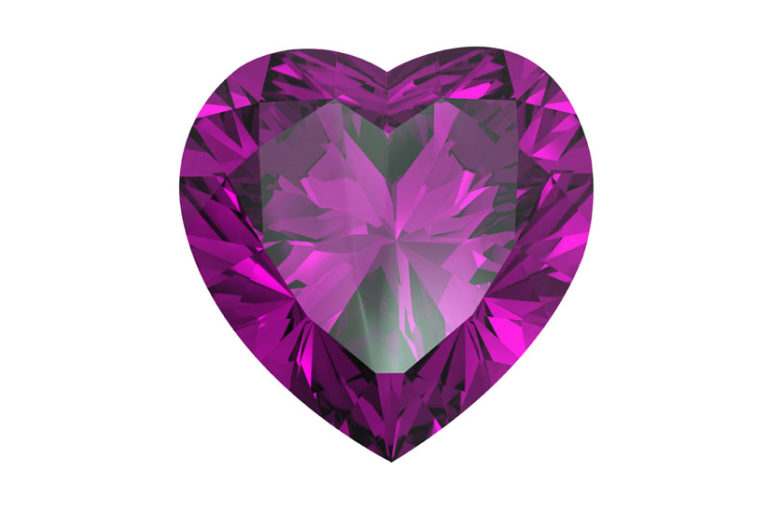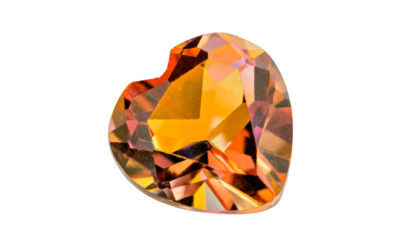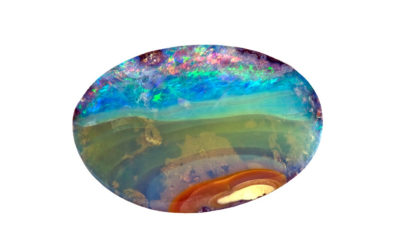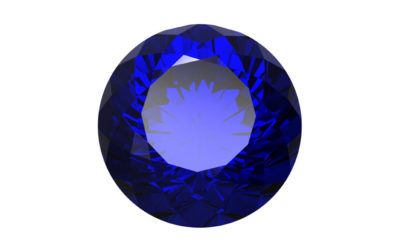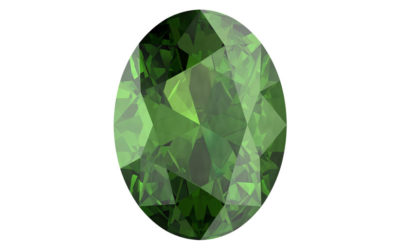The western world knows the month of February as the Month of Pisces, but the silent and dreamful fish isn’t the only alluring representation of the month. February is the month of the birthstone amethyst.
It is one of the most popular gems not just because it’s beautiful but because it goes well with warmer and cooler shades of clothing. It’s also one of the more affordable gems on the market. In other words, it’s quite the versatile gem. So, congratulations February babies – you’ve got a beauty on your hands!
What does the amethyst represent?
Representing the intellectual aspect of humanity, the gem is like a princess among crystals who has metaphysical properties. It is distinct and quite popular among the court of gem enthusiasts. One of the reasons why people love it so much is because it has a purple tint to it that is quite exclusive. The iron and mineral composition of the quartz is what gives it that natural characteristic.
Known for being a gem that brings about a calming and serene state of mind, the purple gem is believed to bring about a sense of balance to the mind, the body, and the spirit. Perhaps that’s why it is worn with warmer shades in the fashion world. Looking at it lets the impatient nature of everyday anxieties melt away.
Once a highly sought after gem in the ancient world, it has not lost its luster in the modern realm. It’s found in different parts of the planet, mostly in Greece, northern areas from Africa, the Middle East, and even Italy.
What’s really interesting to know though is that you don’t have to go out digging for them anymore. They can be produced within laboratories nowadays! The good news is that both versions of the quartz are open to you.
Some people wouldn’t want one made in a laboratory. Perhaps they took a romantic trip to Italy and it means a lot more knowing that the gem sitting in their lover’s ring came from the same place they shared a kiss under the stars.
Still, others may find that getting one from the laboratory works well with their personal beliefs. Perhaps they’re concerned about the safety precautions that are taken (or not taken) by the miners who mine for the contents.
Either reason, there is an amethyst for everyone.
Amethyst, the “cerebral” gem
Known for being the representation of cerebral thought, the gem is worn to help improve your thinking power. While there are quite a few different gems that are known for having metaphysical or emotional intelligence properties, there aren’t too many that have a strong psychological tie like that of the “smart” gem, which makes its crystal power even more unique.
The western region’s interest in the gem can be tied to the influence of the Enlightenment Era in which the religious and artistic realms of knowledge began to merge with the budding scientific method. We saw the rise of value in intellectual thought become as valuable as gems themselves. During earlier times, when schooling was far rarer, intellect and schooling were representations of wealth and power in society.
Knowing that, can you imagine receiving a piece of jewelry that’s been encrusted with a piece of amethyst? Not only are you being told that you’re an intellect, but the buyer is hoping you’re able to learn even more. They wish for you to spread your brainy wings and fly even further!
The representation of the intellect isn’t the only thing that the gem is known for. They’re also tied to sobriety and promoting straightforward thinking. They’re meant to help you make better decisions when presented with tough questions in life. Some gem enthusiasts believe that this is why it was given its name from Ancient Greece, which means “no longer intoxicated.” Tied to Dionysus, the god of wine, the gem was considered protection against drunkenness and the problematic behavior that accompanies inebriation.
This idea of drunkenness isn’t just in the literal sense of the word, as it also stands for helping people make sound decisions when they’re in an intoxicated state of mind. Consider the term “drunk in love.” Being infatuated with someone else can lead to bad choices if you’re already in a relationship. The same could be said about being overoptimistic or being too pessimistic. The key is balanced intellect.
Overall, they are meant to help you think critically about any given situation.
What is the amethyst?
The purple stone is part of the quartz family. It’s lavender in color and continues to be one of the most popular gems in the modern day world. They’re used to create tumbled stones, beads, cabochons, faceted stones, and other types of jewelry.
According to the Mohs Measurement of Hardness, the February birthstone contains a hardness of 7 and will not break via cleavage. This makes it durable for the use of many forms of jewelry whether it is bracelets, pendants, rings, or earrings. Because deposits of it are commonly found in Africa and South America, the price of the gem has stayed pretty affordable.
Where are amethysts found?
Amethyst is composed of igneous and metamorphic rocks. Less commonly, they will have bits of sedimentary rock inside them as well. They’re not just made of quartz but also silicon ore, which gives them a crystalline form. Components of the gem are commonly found in the earth’s crust.
Found in virtually all continents, greater groupings of it are found in North America, Africa, and South America. In particular, Zambia and Brazil are known for having the biggest production of the stone each year!
Chemical composition wise, they have deposits of manganese and iron, which help to give it the purple sheen we love so much. The amounts found within the different pieces of the gem determine how pale or deep purple the jewel becomes. Structurally, they’re hexagonal and six-sided.
Are amethysts precious or semiprecious stones?
They are semiprecious and share company with the likes of diamonds and sapphires. Just because they’re known for being semiprecious doesn’t mean that they’re lesser than a precious stone. It just means that they’re not as rare.
How much is an amethyst valued at?
The easiest way to measure the value of one is to look at its color. The more common of the shade of purple it is, the cheaper it will be. Ten-carat amethysts have reportedly sold for around $10 for an entire stone. On the other end, there have been 2-carat varieties selling for around $50 per carat! This gives purchasing one easier for both those who have a little more money in their bank accounts and those who don’t.
What type of jewelry is an amethyst found in?
Amethyst is very common and can be easily cut into smaller gems for the use of jewelry. This makes it accessible in many different forms like necklaces, beads, rings, earrings, or even by itself. The paler versions are constantly placed with other gems such as pearls because they help complement other color palettes.
How do you care for an amethyst?
According to GIA.edu, amethyst is quartz, which is what makes up the composition of substances such as sand and dust. They are also pretty tough and they will last you a long time, but they should still be treated with the right type of care so they don’t take damage or get scratched. With the rating of 7 on the Mohs scale, it’s perfect for all forms of jewelry (Care).
One of the things that can fracture the gem is major changes in temperature. For instance, if taken from a very cold outdoor climate and then exposed to very hot water, the gem can become damaged. Oddly enough, some of them will lose some of their colors if they’re exposed to intense light. Be sure to keep them away from chemical compounds such as alkaline solutions, ammonium fluoride, and hydrofluoric acid.
If an amethyst needs to be cleaned, use warm and soapy water. Ultrasonic cleaners are okay to use, but not with a gem that’s treated for a fracture or that has been dyed. Never subject the gem to heat and never steam clean them.
What are the different types of amethyst gems?
Not all amethysts are light purple, nor do they all have the same composition. Here are the different types of the February birthstone we know of:
Siberian Amethyst: Found in the Ural Mountains, this type of amethyst was first mined around the eighteenth century. They’re known for being tinted a dark violet at times but is commonly seen in a paler violet tone. Now, the word is more of a description of the color of the stone than an actual type of gem.
Green Amethyst: A rarer type, the green amethyst is actually artificially made that color. It’s created by heat-treating a regular gemstone. Some enthusiasts know it as a “Prasiolite.”
Brazilian Amethyst: As the name implies, it was originally found in Brazil. It is not as much of a type as it is a name that is used in gem trade and is a name that is used in reference to various South American amethysts.
Bolivian Amethyst: Similar to the “Brazilian Amethyst,” it is a type of the February gemstone that was originally found in Bolivia.
Amethyst Quartz: A specific type of amethyst that is actually a mix of Clear Quartz, also known as Milky Quartz, and regular components of the original gem. It’s bottom tint ranges from clear to white and the top has a purple hue. Commonly used to create beads, it can also be a banded version of white and purple and is polished and tumbled.
African Amethyst: As the name implies, this type of amethyst was originally found in Africa. It is not as much of a type of amethyst as it is a phrase used in gem trade to describe a darker shade of the gem.
The Month of Royalty
The birthstone of February has continued to be one of the most cherished gems over the years.
Being associated with the month of Pisces, the gem was once meant to represent the sixth year of marriage and given to congratulate the milestone anniversary. It is also a gem that’s been a part of many royalties’ collections the world over.
Historically, they’ve been seen in the Crown Jewels in Britain and found in the ancient ruins of Egypt. A record 400-pound chunk of it is kept in the Smithsonian.
Ironically, at one point, the value of it was higher than that of the ruby and the sapphire. At this time, its value was equaled to that of diamonds. This was before the gem was found in greater deposits and eventually, its price and value dropped considerably.
In Christianity, the color purple has become known to represent royalty and Christ. The gem was found in rings worn by Bishops. Some sects associated the gem with St. Matthias. The birthstone makes an appearance more than once in the Bible as well. Not only was it one of the 12 gems that were put into High Priest Aaron’s breastplate, but it was also used to build the 12th foundation of the Holy City.
The Month of Spilled Wine
One of the most interesting tales told involving the gem is found in ancient Greek mythology.
The story goes that amethyst wasn’t a gem but an actual person. She was a young virgin who was abused by the Greek god Dionysus when he was drunk. Specifically, he was drunk off of red wine. Amethyst asked for help from the goddess Diana, who turned the young woman into shimmering white quartz. Dionysus found this out and full of remorse for what he did, collected his tears into the goblet of red wine that he held.
When the goblet was tipped over, the wine spilled over her new form. It changed the color of the stone to a deep purple tone. That’s how the birthstone we know nowadays was brought into existence.
The somber narrative gives the stone’s symbol of intellect a more powerful meaning.

